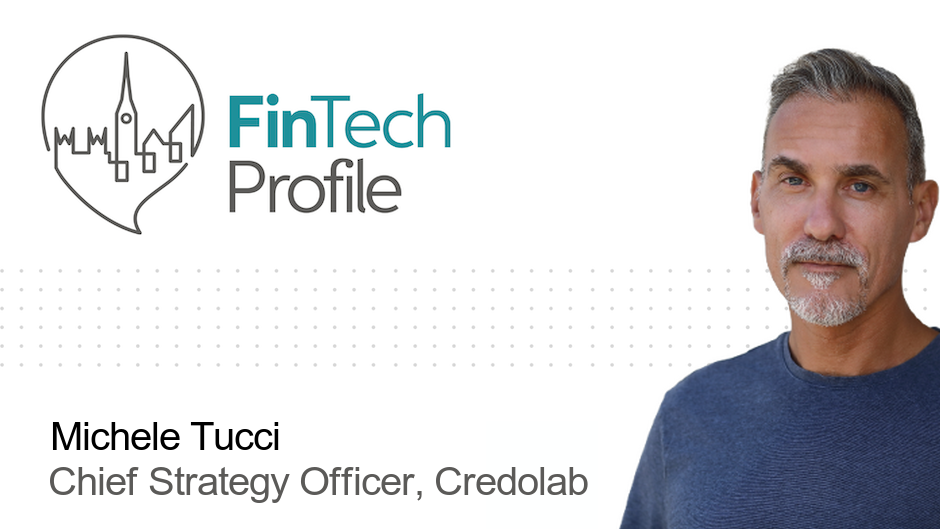Gosia Furmanik, Founder & CEO, Fena Labs

Today I’m bringing you Gosia Furmanik, Founder and CEO of fena. Fena offers an all-in-one sales and operations platform to SMEs selling goods across offline and online channels, enhanced by powerful Open Banking payments.
Over to you Gosia:
Who are you and what’s your background?
My name is Gosia Furmanik. I am Polish and came to the UK in 2009 to pursue my bachelor’s degree. Interestingly, my degree wasn’t related to finance at all; I studied advertising, PR, and media. At that time, I was passionate about advertising and genuinely believed I would spend my entire career in that field, primarily focusing on campaign design and creation.
For the first few years after graduating, I did work in advertising and marketing. However, in 2016, while I enjoyed my work, I discovered a passion for technology and startups. I decided to explore new opportunities in that area.
Briefly, I worked for a startup focused on early childhood education, using technology to introduce young children to coding concepts. I then moved on to another startup called Realla, a prop-tech company with two main components: a commercial property search engine and a CRM portfolio management tool for commercial property managers. I worked there for about four years, and in 2018, the startup was acquired by CoStar US, a large Nasdaq 100 company. This gave me the unique experience of working in a very early-stage startup through its acquisition and subsequent integration into a larger organisation.
This experience sparked my interest in entrepreneurship, and I decided to start my own business. In 2019, I founded fena, originally conceived as Fast Pay. So, my practical background is essentially in product marketing, product design, and finding the right messaging to sell those products.
What is your job title and what are your general responsibilities?
I’m the founder and CEO of Fena. As a startup founder, I wear many hats, but my primary focus areas are product development, product marketing, setting strategic goals for the sales team, and of course, fundraising – crucial activities in the startup phase. So, essentially, I do a little bit of everything as needed.
Can you give us an overview of your business?
As mentioned, Fena began as an open banking payments provider, and that remains a core product we offer to our customers. However, we’ve expanded our offerings with a B2B SaaS platform designed to help primarily B2B, but also B2C e-commerce SMEs, manage their inventory, products, suppliers, and sales channels. This platform also includes picking, packing, and shipping modules.
Recently, we added another layer – a soft POS application for iOS and Android that provides access to a cloud-based POS system with built-in open banking payments. We’re also in the process of integrating card payments into this suite.
Tell us how you are funded?
So far, we’ve raised just under £2 million through the EIS and SEIS schemes, primarily from angel investors focused on tech startups, particularly in the fintech sector.
What’s the origin story? Why did you start the company? To solve what problems?
I think there’s a twofold answer:
First and foremost, the entrepreneurial bug bit me while working at my previous startup. I thrived in the fast-paced environment, loved the challenges of early-stage development, and found immense satisfaction in building something from scratch, generating revenue, and ultimately exiting the business.
Secondly, and perhaps more profoundly, I genuinely believe SMEs are the backbone of economic growth. Most people are employed by SMEs, and they drive innovation and job creation. Growing up in Poland in the early nineties, I witnessed the transition from a centrally planned economy to a thriving capitalist system. I saw firsthand the impact small business owners could have on their communities and local economies. I was inspired by stories of individuals who started with nothing and built successful businesses.
My goal has always been to make it easier for SMEs to operate, grow, and scale into lasting enterprises. When open banking emerged, we saw an opportunity to help on the payments side. SMEs typically lack negotiating power when it comes to card payment processing fees. Open banking, with its current structure, offered a chance to provide a cheaper, more reliable service, levelling the playing field for small businesses.
However, we knew that open banking payments infrastructure was heavily API-driven, and most small businesses wouldn’t have the resources to build their own connections. So, we decided to create a plug-and-play platform that allows SMEs to take advantage of open banking payments without the burden of costly API integrations.
Our second product was born out of the needs and feedback from our existing customer base. They loved the ease of use and integration of our open banking payments platform but often struggled with other operational aspects of their businesses, such as inventory management across multiple channels. We realised that a plug-and-play solution to integrate these channels and improve operational efficiency, while also saving money on payments, was a no-brainer.
Following the same philosophy as our payment platform, we built this solution, offering an all-in-one payments and operations platform for SMEs. This enables them to manage their entire business more effectively, improve operational efficiency, reduce costs, and ultimately scale their operations.
Who are your target customers? What’s your revenue model?
Our target customers are primarily B2B SMEs that sell across multiple channels, both online and offline. We don’t focus on a single sector, but we’ve seen significant success with food and beverage wholesalers, as well as brands that started as direct-to-consumer and have since evolved to include a wholesale component. These tend to be in sectors like home goods, gifts, accessories, and niche food brands.
Our revenue model is straightforward, typical of a B2B SaaS business. We offer two types of subscriptions:
- Fena Business Toolkit: This is a subscription to our platform, with various tiers based on customer needs. Most tiers include a certain number of free open banking payments.
- Payments Only: This subscription is for businesses that only want to utilise our open banking payments solution. Tiers for this subscription vary based on payment volume.
If you had a magic wand, what one thing would you change in the banking and/or FinTech sector?
I probably won’t surprise anyone by saying that I think regulatory requirements can be burdensome, especially for small businesses and startups in regulated spaces. I understand that regulators try to apply a proportional approach, but I believe there’s room for improvement. It would be beneficial to have regulatory requirements adjusted to the size of the business, particularly when applying for a licence. This would be a significant development for fintech companies.
Secondly, while not directly related to the banking sector, financial services often have a negative reputation, leading to a trust issue when it comes to consumers trying new fintech solutions. I would like to see consumers be more open to trying these new solutions, even if just once. I understand people are cautious, especially with the prevalence of scams, but by being less conservative, consumers could potentially discover better user experiences, cheaper solutions, and an overall improved financial experience.
What is your message for the larger players in the Financial Services marketplace?
I’m a firm believer in partnerships and collaborations. It would be great to see larger businesses more open to collaborating with startups. I know there are numerous startup programs run by corporations within the fintech and financial services industries, such as Mastercard’s Start Path program, which Fena is a part of. This program has provided us with invaluable exposure to Mastercard’s corporate client base.
I believe that if more corporations integrated such collaborations into their procurement processes, particularly in financial services, it could be incredibly beneficial. This process can often be time-consuming and burdensome for smaller businesses. Therefore, it would be advantageous to see more tenders or cooperation on a trial basis, allowing smaller businesses to prove themselves before scaling up to larger partnerships, instead of requiring them to immediately navigate extensive procurement processes.
Where do you get your Financial Services/FinTech industry news from?
I subscribe to The Paypers (https://thepaypers.com/), a portal and daily newsletter with updates from the payments industry. I recommend you subscribe to it as well. It has a great curation of daily news. For a general understanding of the current economic state and trends, I also read the Financial Times.
Additionally, I’m a big fan of podcasts, and I highly recommend the Bloomberg podcasts on various topics (see the full list here). They’re a great source for both general economic news and specific financial industry insights.
Can you list 3 people you rate from the FinTech and/or Financial Services sector that we should be following on LinkedIn, and why?
- Marie Walker: Marie is a curator for open-conversations.org. Her curation spans a range of topics and issues, making it a great source if you want to keep up with the latest in Open Banking and Open Finance.
- Jas Shah: Jas’s regular LinkedIn updates on the state of fintech in the UK are a great source of insights into the payments industry. His superpower is distilling and summarising complex fintech ideas into easily understandable concepts.
- Marcel van Oost: Marcel connects the dots in fintech. He has a knack for finding key trends and showcasing them visually using compelling infographics.
What FinTech services (and/or apps) do you personally use?
I probably won’t surprise anyone by saying that both personally and for our business, we use the Monzo Bank banking app and bank account. While their banking offerings may not be as robust as those of more established banks, their online banking app is exceptional. It’s intuitive, well-designed, and excellent for personal finance management.
For personal budgeting, I use Emma – we are hiring!. It’s a fantastic app that allows you to connect various bank accounts and income sources, then analyse your spending and saving habits.
Lastly, I cannot stress enough the importance of building a strong credit score. ClearScore is a great free app for tracking your credit score and offers a genuinely helpful service. They do have a paid version if you need additional features, but the free version is robust and incredibly useful, especially for those preparing for a mortgage or similar financial goals.
What’s the best new FinTech product or service you’ve seen recently?
The product itself is not new; however, Splitwise Inc. recently introduced open banking payments as a way for users to settle outstanding balances. This is yet another example of Open Banking payments being adopted by consumers, extending beyond its traditional use cases.
Splitwise, in their own words, is a free tool for friends and roommates to track bills and other shared expenses, ensuring everyone gets paid back.
Finally, let’s talk predictions. What trends do you think are going to define the next few years in the FinTech sector?
I think open finance is a significant development on the horizon. The ability to access all financial services and accounts through APIs, and to use third-party services to connect those accounts across various areas – banking, investments, pensions, savings, loans, and more – within a single application would be transformative. This would allow individuals to truly understand their overall financial situation, rather than having a fragmented view.
On another note, I believe there will be a growing reliance on smart contracts. While this may not be immediately apparent in countries with strong rule of law and well-documented property rights, it could be a game-changer in regions where ownership rights are less established. Smart contracts can prove and track ownership, potentially revolutionising the way property is valued, particularly in developing countries where record-keeping may be inadequate and legal property rights are difficult to maintain.
Lastly, with the current high interest rates and predictions that they won’t return to the lows of a few years ago, I think the mortgage application process is ripe for disruption. The current process is cumbersome for applicants, lenders, and brokers alike. Streamlining this process through technology and making it faster and more transparent, especially for first-time buyers, could significantly improve the market.
Ideally, the entire mortgage origination and management process could be centralised on a single platform that is easily managed and reviewed by all parties involved. This would eliminate the need to contact multiple brokers and fill out countless forms, making the entire process more efficient and user-friendly.
Thank you very much for taking the time to participate Gosia!
You can find Gosia on LinkedIn here: Gosia Furmanik and her company fena‘s website is: https://www.fena.co/.




